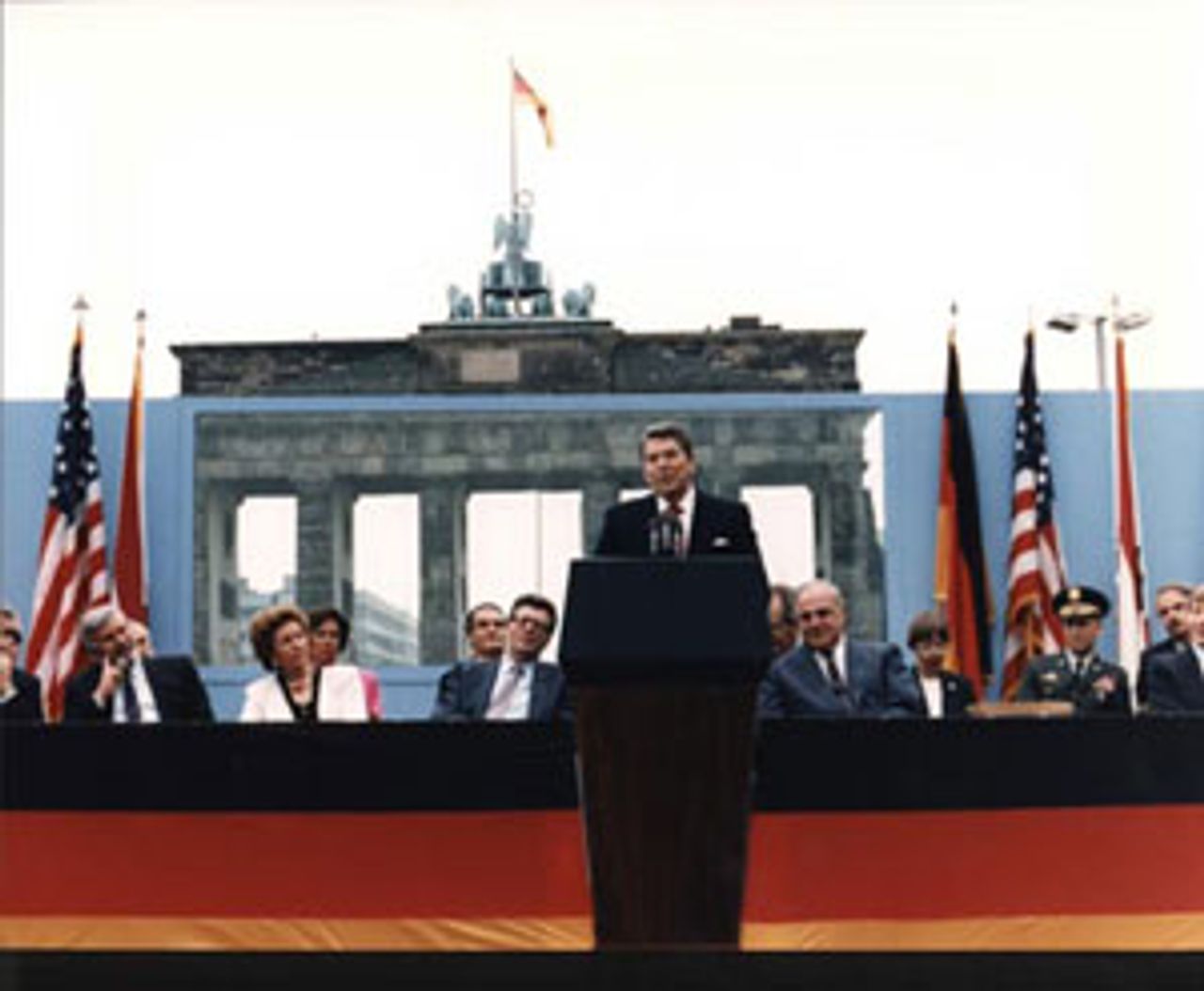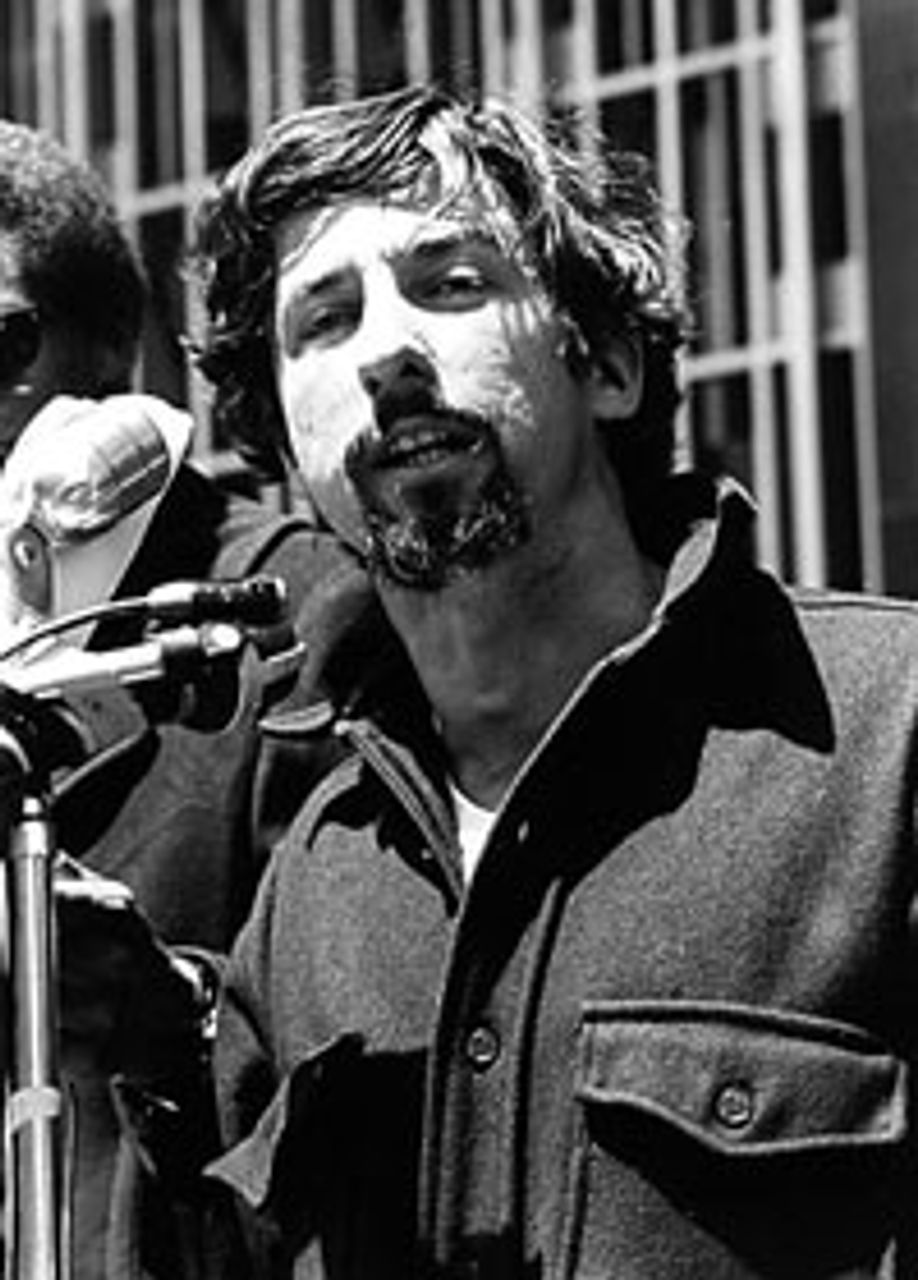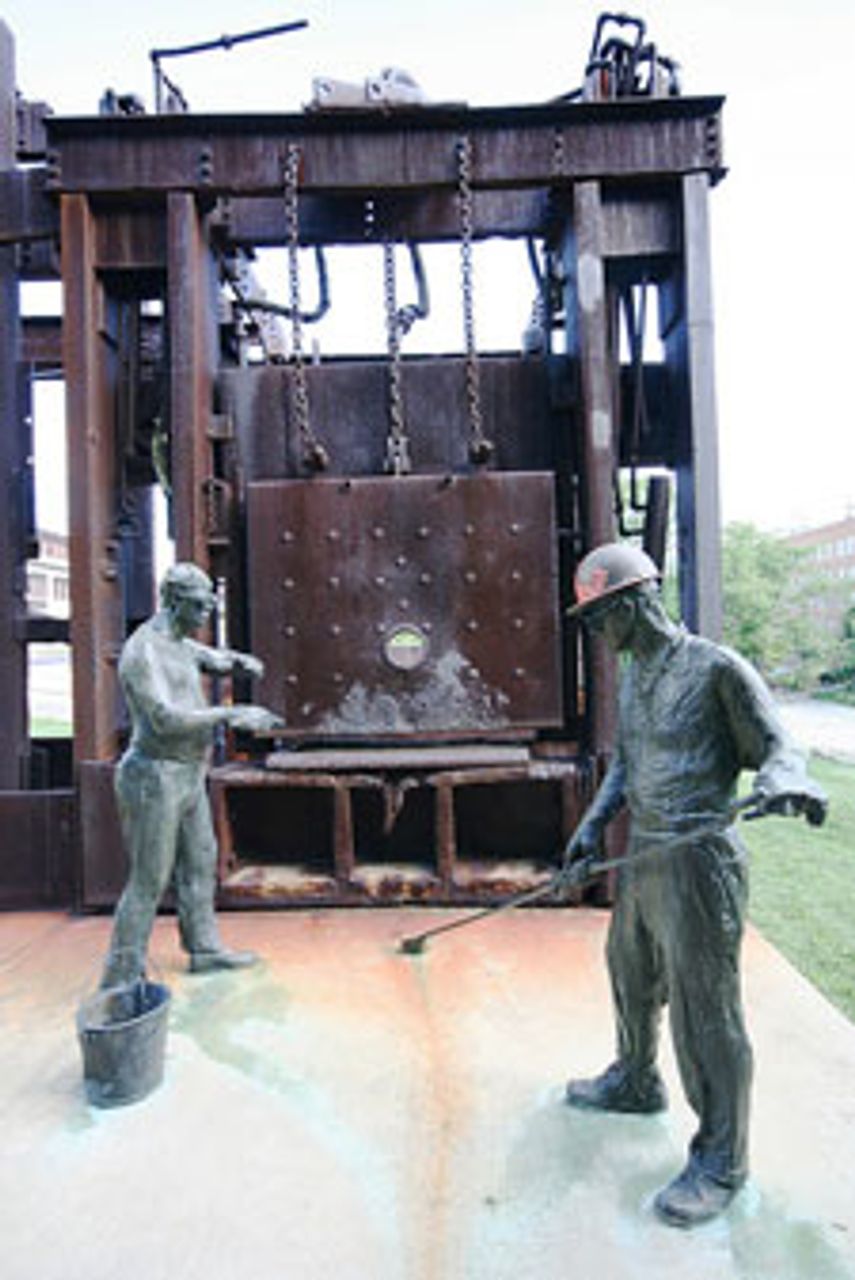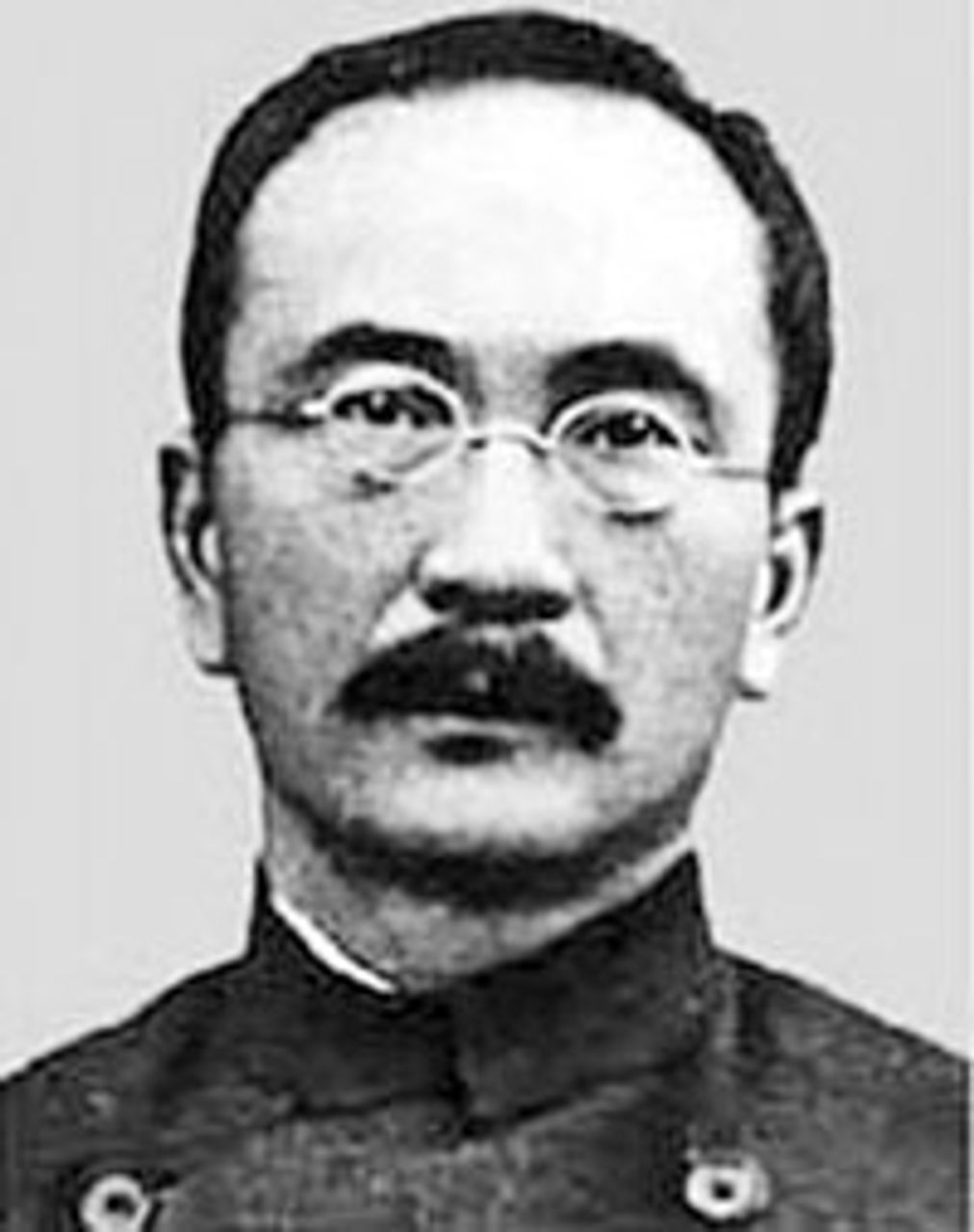This Week in History provides brief synopses of important historical events whose anniversaries fall this week.
25 Years Ago | 50 Years Ago | 75 Years Ago | 100 Years Ago
25 years ago: Tens of thousands protest Reagan’s visit to Berlin
 Reagan speaking at the Brandenburg Gate
Reagan speaking at the Brandenburg GateOn Thursday evening, June 11, 1987, tens of thousands demonstrated in West Berlin streets as police set up a security cordon in anticipation of US President Ronald Reagan’s visit the following day. Police estimated the crowds at 24,000. Other estimates were up to 50,000. The demonstration was called by many organizations, including the Green Party and the group Anonymous, to protest the militaristic Cold War policies of the US.
Some 100,000 police, many in full riot gear, were mobilized against the protesters, who marched down the Kurfurstendamm, demanding an end to nuclear armaments.
The Reagan administration was responsible for escalating the deployment of short and intermediate range nuclear-armed ballistic missiles in West Germany as a so-called deterrent to the Soviet Union. In 1984, under Reagan’s direction, the US military set up the Strategic Defense Initiative Organization to oversee the deployment of a space-based nuclear weapons program, which came to be known as the “Star Wars” program.
Reagan was scheduled to speak at the Brandenburg Gate, the arch that symbolized the division between West and East Berlin, on the occasion of the 750th anniversary of the city of Berlin. His speech included a provocative call on Soviet President Gorbachev to “tear down this wall.” Reagan’s advisors urged him not to include that phrase in his speech as too bellicose. While the speech was much reported in the press, it had little to do with the eventual dismantling of the wall, which was hated by the East German population, two years later.
The day after Reagan’s speech, more than 100,000 demonstrated in Bonn, some 350 miles to the west, for peace and disarmament.
50 years ago: SDS issues Port Huron Statement
 Tom Hayden
Tom HaydenOn June, 15, 1962, the Students for a Democratic Society (SDS) issued its Port Huron Statement, named after the Michigan city close to the location of a national gathering of the radical student group. Though SDS had been set up in 1960 by the League for Industrial Democracy (LID), a reformist group linked to the anti-communist leadership of the Socialist Party, the Port Huron Statement is considered the student organization’s founding document.
The Port Huron Statement responded to the first signs of radicalization of American youth in response to the civil rights movement of oppressed blacks in the South. It anticipated both the mass radicalization of youth in the 1960s as well as the emergence of a “New Left” hostile to the working class and Marxism.
The statement, drafted by University of Michigan student leader Tom Hayden, spelled out the middle-class reformist outlook of the organizers. It presumed that students lived in privilege and made no mention of the working class. The opening sentences declared that students were “bred in at least modest comfort”, a “comfort penetrated by events too troubling to dismiss.”
The document was clearly influenced by the anti-Marxism of the “Frankfurt School” of academic German émigrés: “The decline of utopia and hope is in fact one of the defining features of social life today;” “Although our own technology is destroying old and creating new forms of social organization, men still tolerate meaningless work and idleness;” “The dominant institutions are complex enough to blunt the minds of their potential critics,” etc., etc.
The document singles out for ridicule the traditions of class struggle in the US and internationally, citing as tired “slogans” such concepts as: “Capitalism Cannot Reform Itself, United Front Against Fascism, General Strike, All Out on May Day” before equating these with anti-communist slogans such as “No Cooperation with Commies and Fellow Travelers.” It totally disregards Trotsky’s struggle against Stalinism: “the dreams of the older left were perverted by Stalinism and never re-created.”
Coming less than a decade after the McCarthy Red Scare, whose conformism and political paranoia was widely rejected by youth, Hayden sought to avoid blatantly anti-Communist language. This brought him into conflict with Michael Harrington and other right-wing social-democrats of the LID.
75 years ago: “Little Steel” strike expands in third week
 Little Steel strike memorial in Ohio
Little Steel strike memorial in OhioOn June 14, 1937, the steelworkers strike for union recognition, better pay and conditions against “Little Steel,” which included Republic and Bethlehem Steel Companies, expanded by winning the support of railway workers at the Bethlehem owned Conemaugh and Blacklight Railroad.
Steelworkers at the Cambrian Mill of Bethlehem Steel in Johnstown, Pennsylvania, where employees had just begun to strike, won the support of the railway workers, which threatened to halt production at all 27 plants owned by Bethlehem and idle some 80,000 workers.
On the same day 8,000 coal miners in western Pennsylvania and West Virginia came out on strike in support of the steelworkers. Republic, Bethlehem and Youngstown steel companies operated a total of 19 coal mines in the region in order to guarantee the enormous energy supplies required by their furnaces and smelters.
On June 15 police attempted to force through the entry of scabbing nightshift workers into Bethlehem’s Cambria Mill. In the protracted melee that ensued, five workers were hospitalized, two with bullet wounds and another suffering a fractured skull. On June 16 dynamite was thrown from a passing car at pickets surrounding the Gautier Mill, part of the Cambria plant, of Bethlehem Steel in Johnstown. No injuries were reported.
On June 17 the Democratic administration of Franklin Roosevelt issued an executive order to appoint a board of mediation to bring an end to the strike that by now covered seven states and involved 70,000 workers.
100 years ago: Chinese prime minister resigns
 Tang Shaoyi
Tang ShaoyiOn June 17, 1912, Chinese prime minister Tang Shaoyi announced his resignation. Tang was the first prime minister of the republic established by the 1911 Chinese Revolution that overthrew the last emperor. While citing “ill health” as the reason for his resignation, Tang’s departure was a product of political conflicts with the warlord president, Yuan Shikai, over the latter’s disregard for the rule of law and his increasingly dictatorial rule.
The immediate cause of Tang’s resignation was opposition to Yuan’s interference in the selection of provincial military governors. Some sources suggest that Yuan forced Tang’s resignation. The rift had broader political significance, given that Tang had played an important role in assisting Yuan to become president of the Chinese Republic, negotiating on his behalf with jockeying factions of republicans in Shanghai.
Yuan’s ascension to the presidency in March 1912, following the resignation of Sun Yat-Sen, exposed the limited character of the 1911 Chinese Revolution. The Manchu dynasty had been reviled by wide layers of the population for its corruption and subservience to the major powers. Significant sections of the state bureaucracy, the military, and the nascent commercial class viewed the dynasty as an obstacle to their own material interests.
A military revolt centered in Wuchang that began in October 1911 rapidly spread, and the fate of the Manchu dynasty was sealed. However, the leaders of the republican forces were incapable of making an appeal to the mass of oppressed peasants and urban workers. Following the overthrow of the Manchus, various warlords, and factions of the state bureaucracy vied for political and financial influence.
Yuan had served as prime minister of the Imperial Cabinet of the Manchus following the outbreak of the revolution, and exercised significant influence over the crisis-ridden dynasty. He was a warlord who commanded a large personal army. When he became president of the republic, Yuan worked to consolidate the old state bureaucracy, and was bitterly opposed to any social or land reforms.
